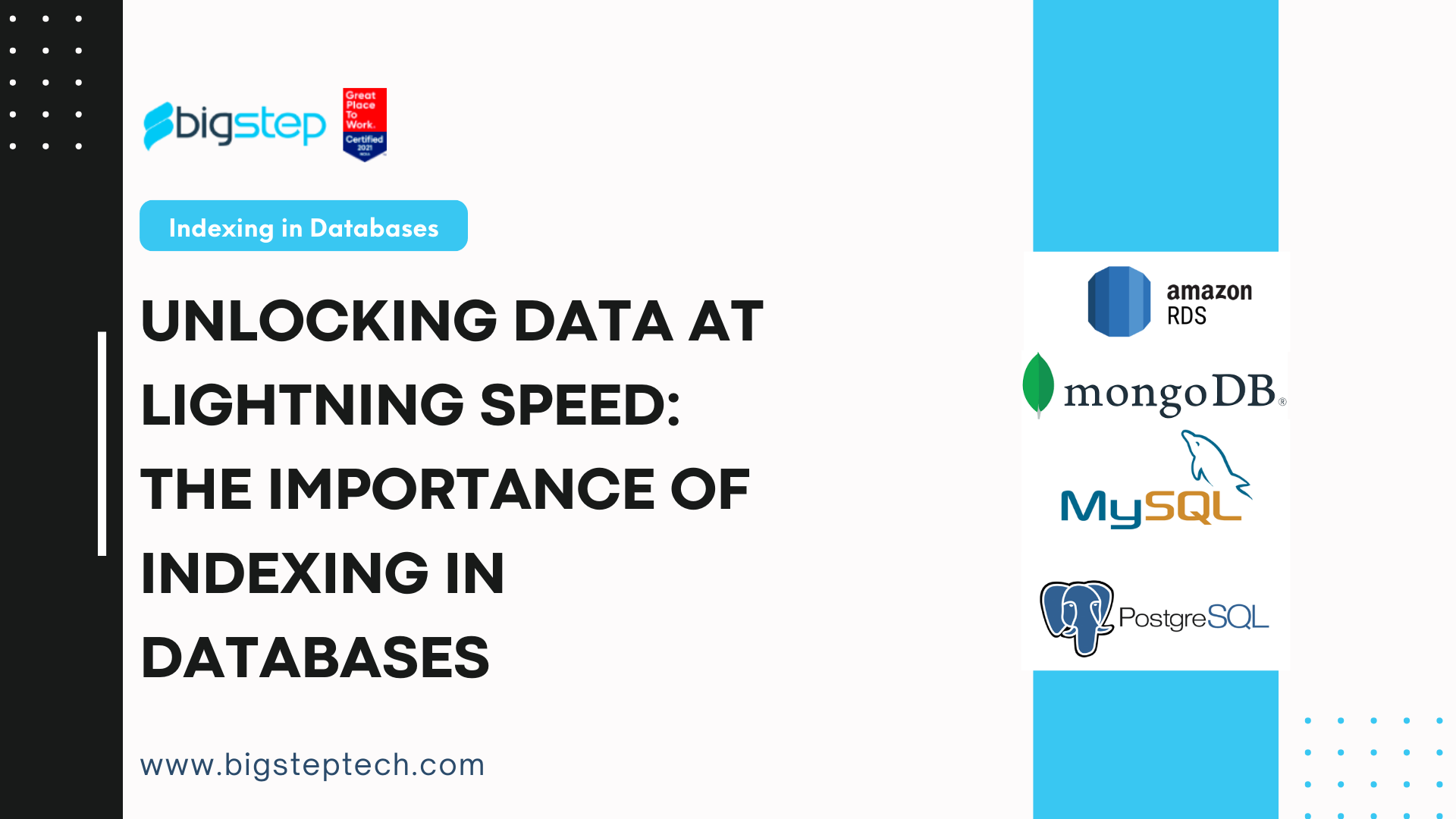Unlocking Data at Lightning Speed: The Importance of Indexing in Databases

In the realm of modern technology, Databases are the backbone of many applications and systems. They serve as repositories for vast amounts of data, allowing for efficient storage, retrieval, and manipulation of information. One crucial aspect that significantly impacts a database’s performance is Indexing. Indexing is the process of creating structured pointers to data within a database, enabling quicker and more efficient data retrieval operations. In this blog post, we’ll delve into why indexing matters in databases and explore its significance in optimizing Data Access and Query Performance.
Understanding Indexing in Databases
Imagine you have a library with thousands of books, and each book is uniquely labeled with a call number and title. When you want to find a specific book, you consult the library’s catalog, which provides you with a list of call numbers corresponding to book titles. This catalog is essentially an index that helps you locate books more efficiently. Similarly, Databases use indexes to expedite data retrieval operations.
Indexes in Databases
1. Faster Data Retrieval
Without Indexes, a Database would have to perform a full scan of every record to find the required data. This process can be time-consuming and inefficient, especially in large Datasets. Indexes provide a shortcut, allowing the Database engine to jump directly to the relevant data, significantly reducing query execution time.
2. Improved Query Performance
When you run a Query against a Database, the Query Optimizer determines the best execution plan. Indexes assist the Optimizer in making informed decisions about how to retrieve data more effectively. By using Indexes, the Optimizer can choose the most efficient path to access the required data, resulting in faster query execution.
3. Support for Filtering and Sorting
Indexes are not limited to speeding up Data Retrieval; they also play a crucial role in filtering and sorting operations. When you apply filters or sorting criteria to a query, Indexes help eliminate irrelevant data quickly and arrange the remaining data in the desired order.
4. Reduced Disk I/O
Disk Input/Output (I/O) is a significant performance bottleneck in Databases. Indexes help reduce the amount of disk I/O required for data retrieval by minimizing the number of Data blocks that need to be read from storage. This optimization can lead to substantial performance gains.
Types of Indexes
Databases support various types of Indices, including
1. B-tree Index
2. Hash Index
3. Bitmap Index
each tailored to specific use cases. For example, B-tree Index is well-suited for range queries and sorting, while the Hash Index excels at exact match lookups.
Challenges and Considerations
While Indexes offer numerous benefits, they also come with some trade-offs. Creating and maintaining Indexes requires additional storage space and incurs overhead during data modification operations like inserts, updates, and deletes. Over-Indexing (creating too many Indexes) can lead to decreased performance due to the overhead of maintaining them.
Best Practices
1. Selective Indexing
Choose which columns to Index wisely. Index columns that are frequently used in queries and have high selectivity (columns with a wide range of unique values).
2. Regular Maintenance
Periodically analyze and optimize your Indexes. Unused or redundant Indexes should be removed, and fragmented Indexes should be rebuilt.
3. Avoid Over-Indexing
While Indexing improves performance, excessive Indexes can slow down data modification operations. Strike a balance between read and write performance.
Conclusion
In the world of Databases, Indexing is a crucial tool for enhancing performance and ensuring efficient data access. By creating structured pointers to data, Databases can retrieve information quickly, support filtering and sorting, and improve query execution times. However, it’s essential to approach Indexing with care, considering factors such as selectivity, query patterns, and the trade-offs between read and write operations. With the right Indexing strategy and best practices, Databases can deliver optimal performance, making them invaluable assets in today’s data-driven applications.
Contact BigStep Technologies today and discover how our cutting-edge solutions can fulfill your requirements. Get in touch with us at info@bigsteptech.com.
Manish Jaiswal
Technology Lead @BigStep Technologies. Expertise in Full Stack Development and crafting cutting edge solutions that blend innovation with practicality.
No Comments
Sorry, the comment form is closed at this time.